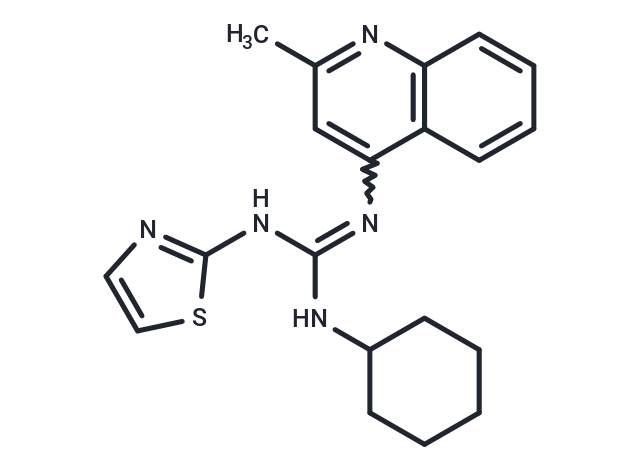Shopping Cart
Remove All Your shopping cart is currently empty
Your shopping cart is currently empty
Timegadine is a competitive inhibitor of COX and lipo-oxygenase, with IC50s ranging from 5 nM (washed rabbit platelets) to 20 μM (rat brain) for COX and 100 μM for lipo-oxygenase both in the cytosol fraction of horse platelet homogenates and in washed rabbit platelets.

| Pack Size | Price | USA Warehouse | Global Warehouse | Quantity |
|---|---|---|---|---|
| 25 mg | $1,520 | 6-8 weeks | 6-8 weeks | |
| 50 mg | $1,980 | 6-8 weeks | 6-8 weeks | |
| 100 mg | $2,500 | 6-8 weeks | 6-8 weeks |
| Description | Timegadine is a competitive inhibitor of COX and lipo-oxygenase, with IC50s ranging from 5 nM (washed rabbit platelets) to 20 μM (rat brain) for COX and 100 μM for lipo-oxygenase both in the cytosol fraction of horse platelet homogenates and in washed rabbit platelets. |
| Targets&IC50 | Lipoxygenase:100 μM (in horse washed rabbit platelets), COX:5 nM (in rabbit platelets), COX:20 μM (in rat brain) |
| In vitro | Timegadine is a potent, competitive COX and lipo-oxygenase inhibitor, with IC50s ranging from 5 nM (washed rabbit platelets) to 20 μM (rat brain) for COX and 100 μM for lipo-oxygenase both in the cytosol fraction of horse platelet homogenates, and in washed rabbit platelets[2],and is a new antiinflammatory agent, |
| In vivo | Timegadine, a new anti-inflammatory agent, is a potent, competitive inhibitor of prostaglandin synthetase, additionally inhibiting cyclo-oxygenase (COX) and lipoxygenase. Administering Timegadine orally at doses ranging from 10 to 30 mg/kg daily effectively suppresses both the initial and subsequent lesions of adjuvant arthritis, particularly when treatment commences on the induction day and extends for 28 days. Notably, Timegadine can prevent the swelling of the non-injected paw for up to 28 days post-adjuvant injection, especially when administered five days before and after disease onset, mirroring the impact of cyclophosphamide[1]. |
| Synonyms | SR1368 |
| Molecular Weight | 365.5 |
| Formula | C20H23N5S |
| Cas No. | 71079-19-1 |
| Relative Density. | 1.31 g/cm3 (Predicted) |
| Storage | Powder: -20°C for 3 years | In solvent: -80°C for 1 year | Shipping with blue ice/Shipping at ambient temperature. |
| Size | Quantity | Unit Price | Amount | Operation |
|---|

Copyright © 2015-2025 TargetMol Chemicals Inc. All Rights Reserved.